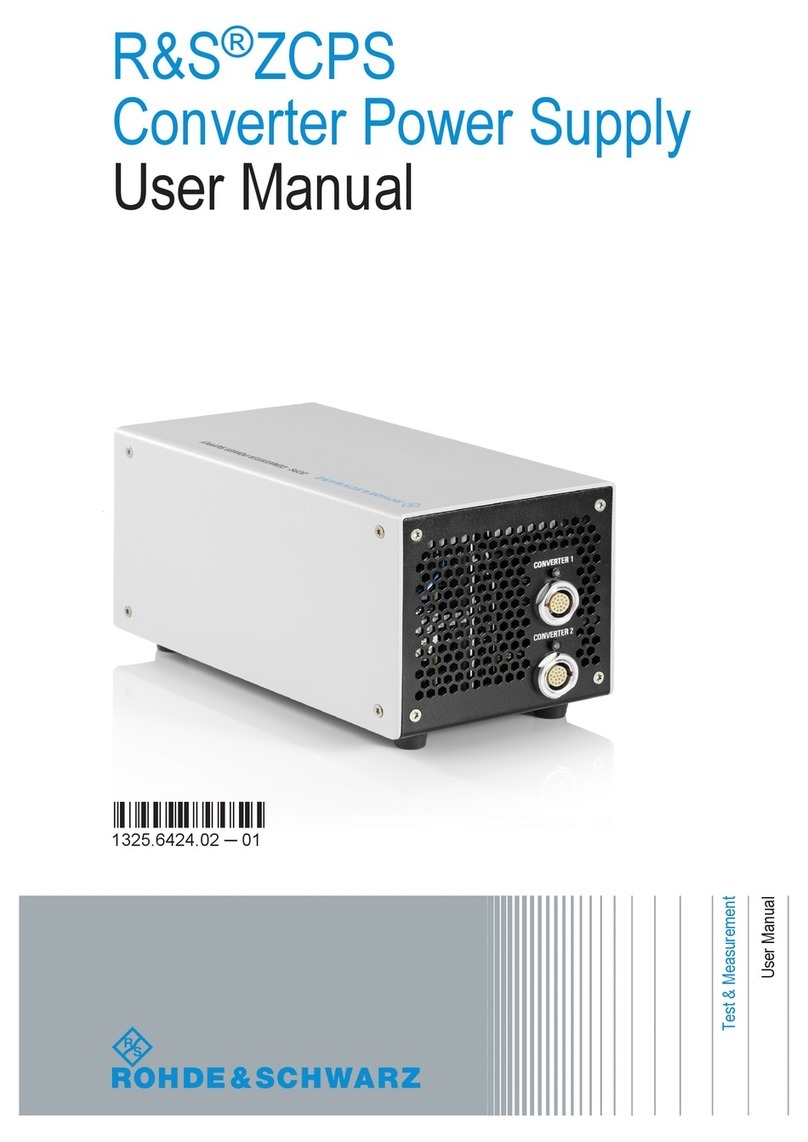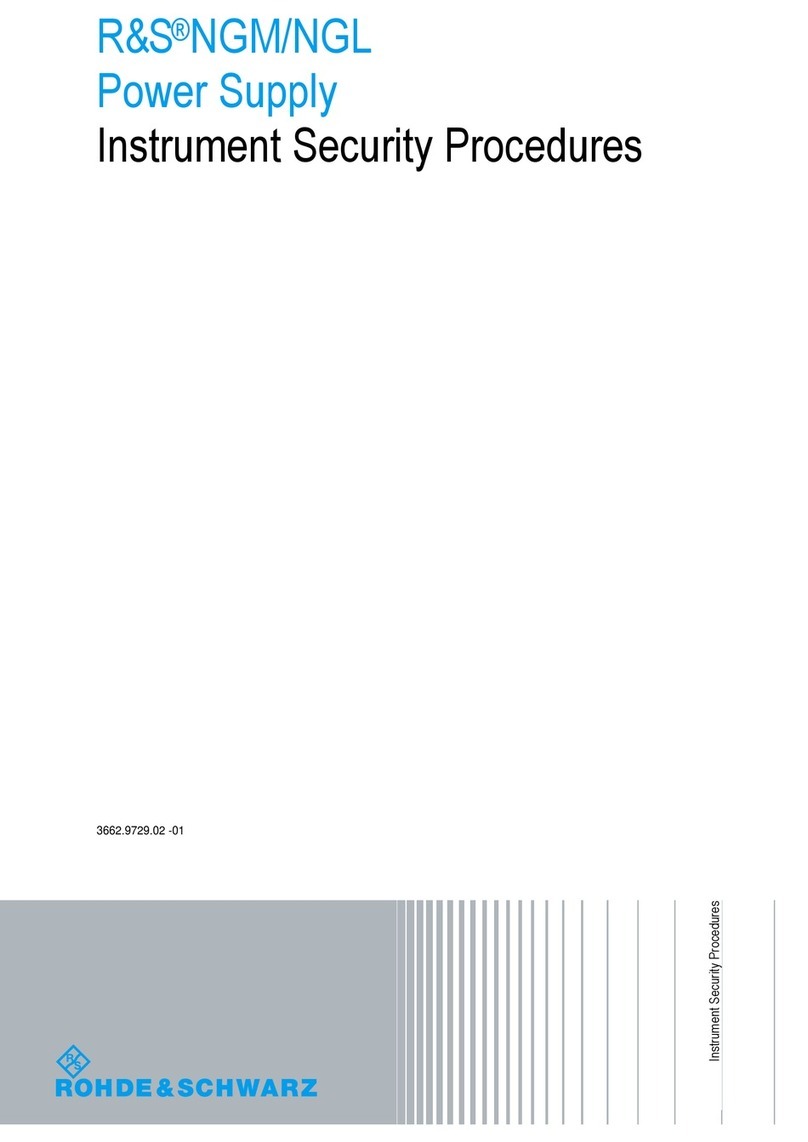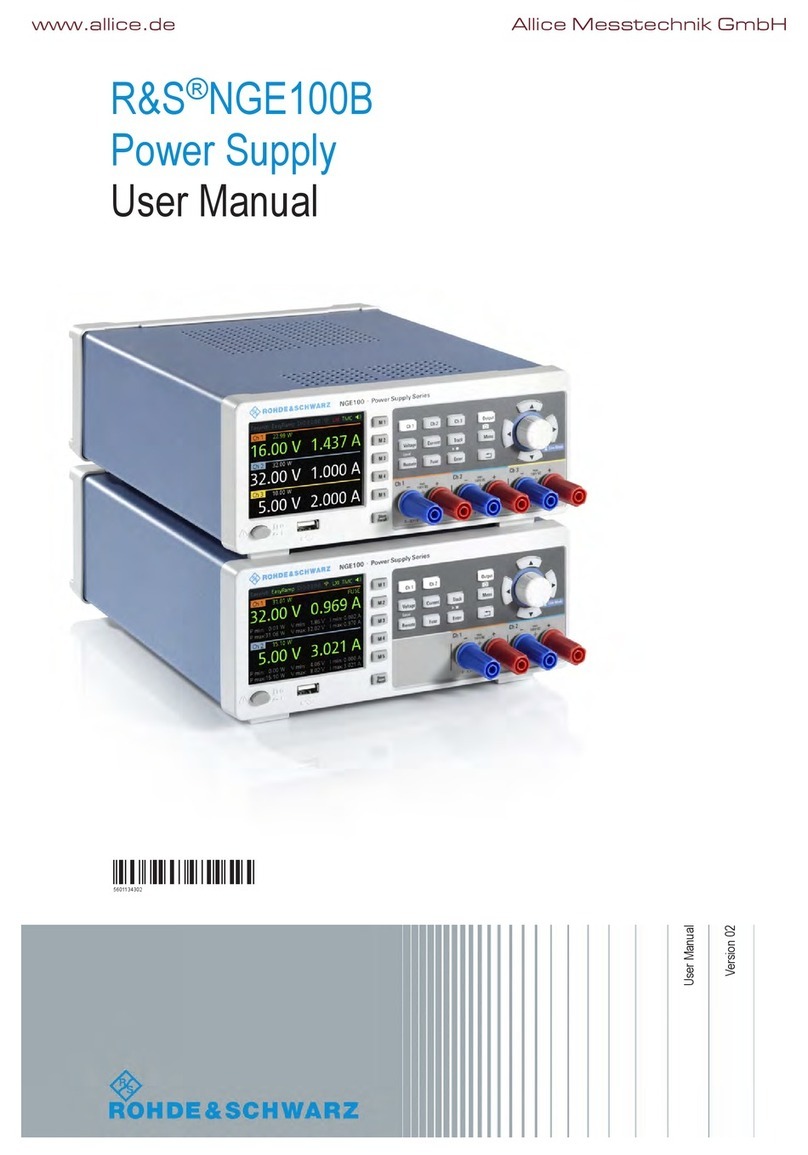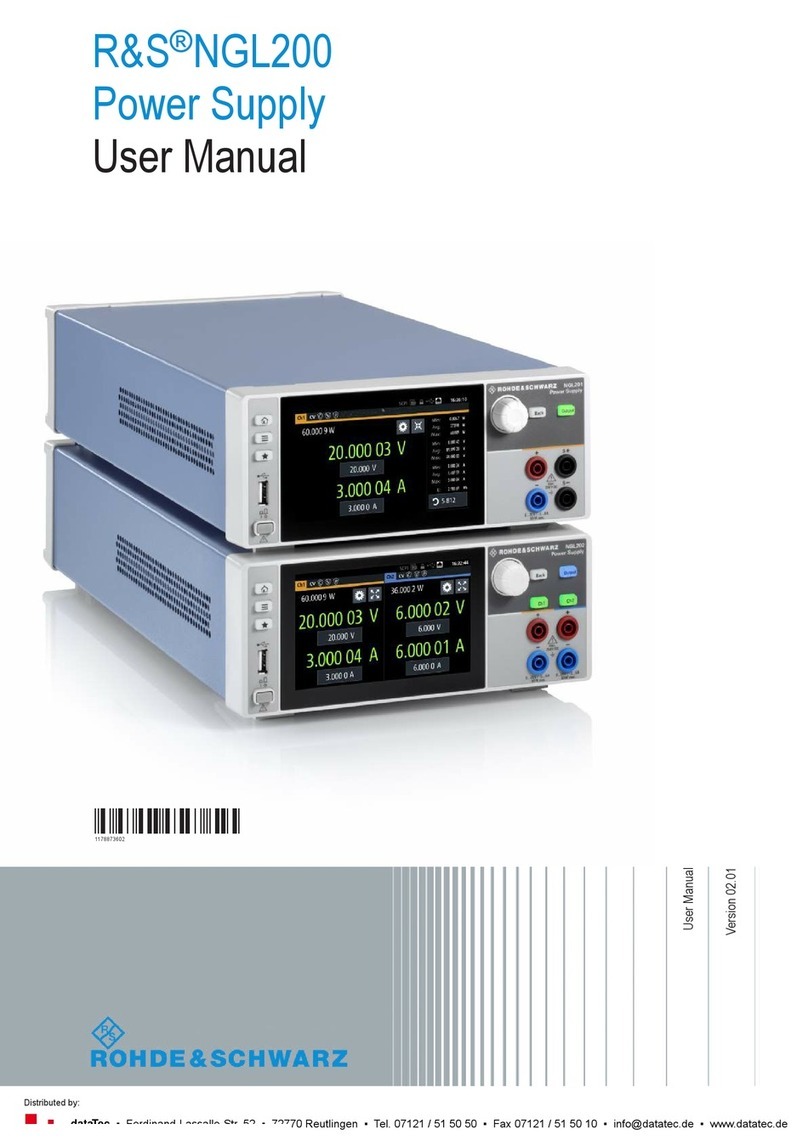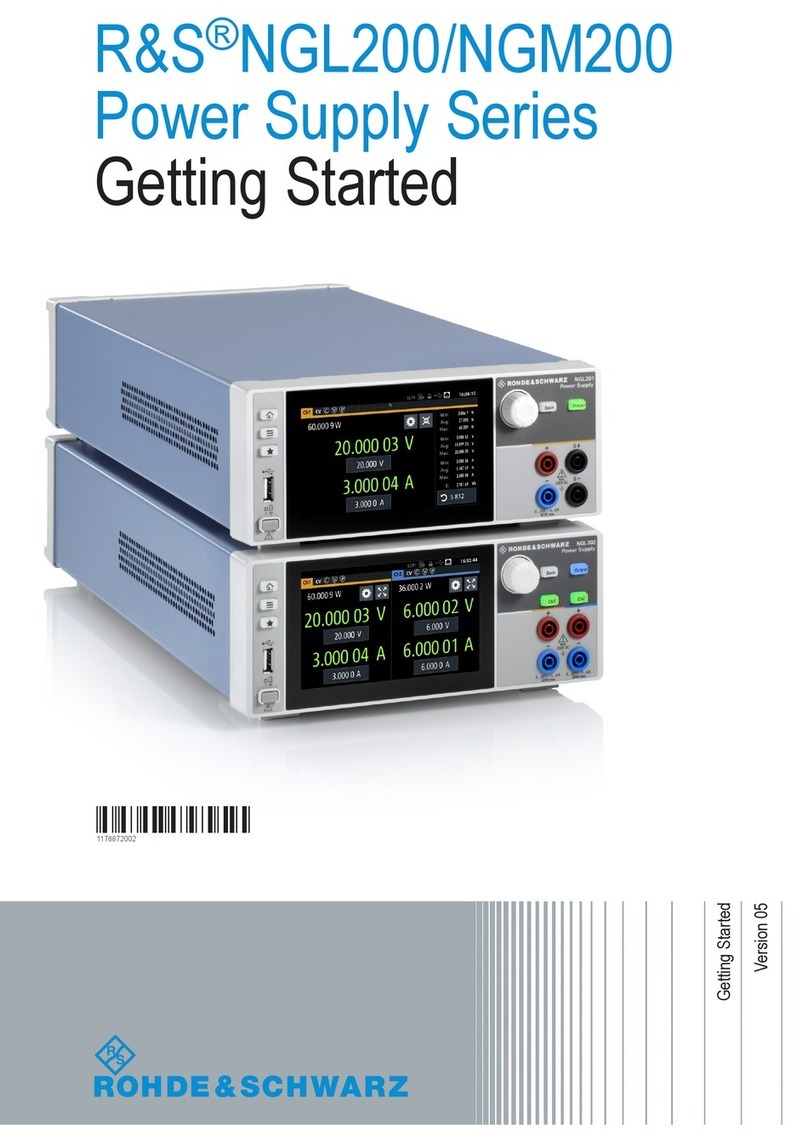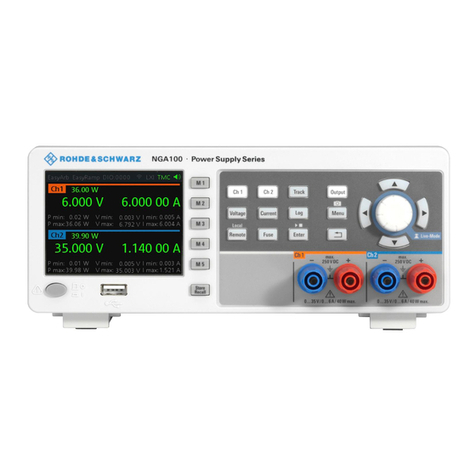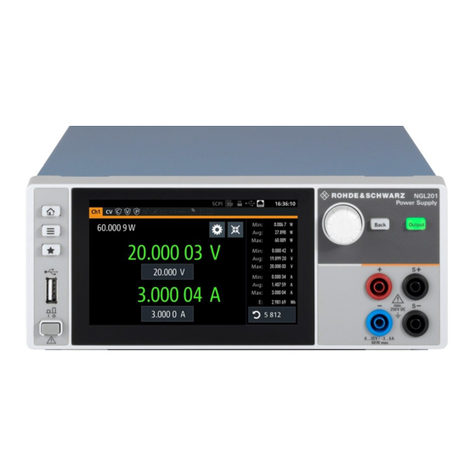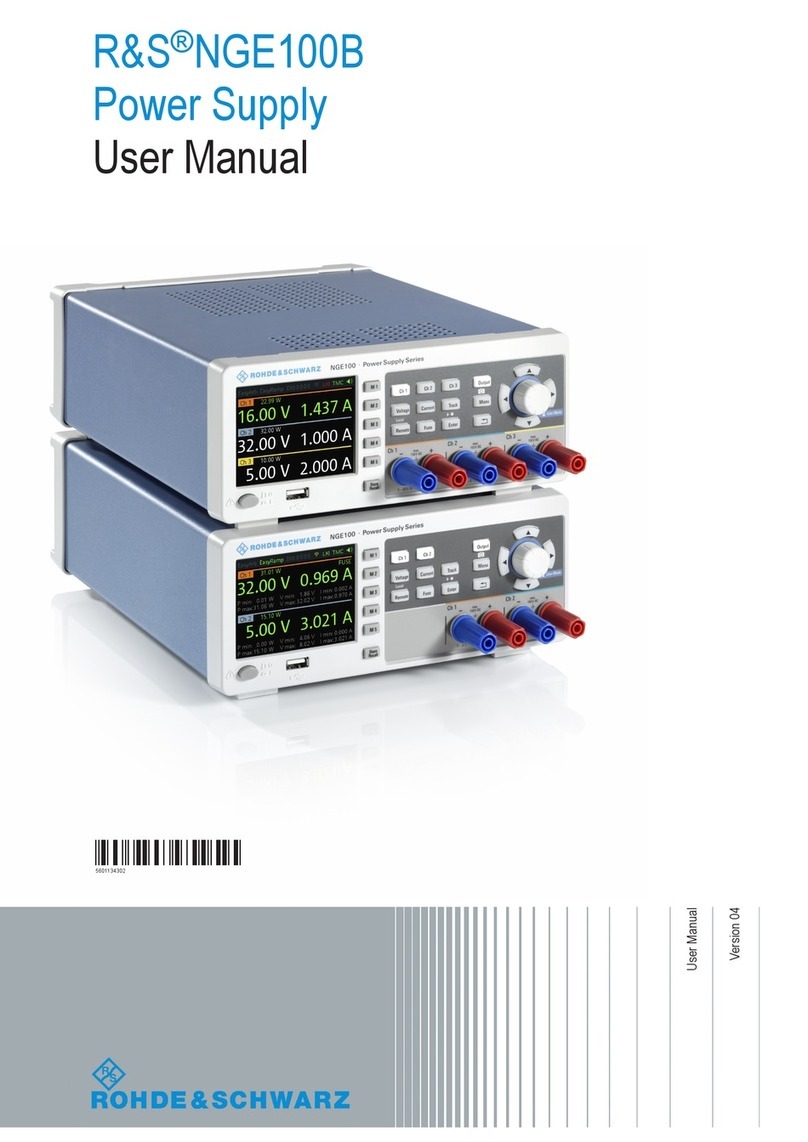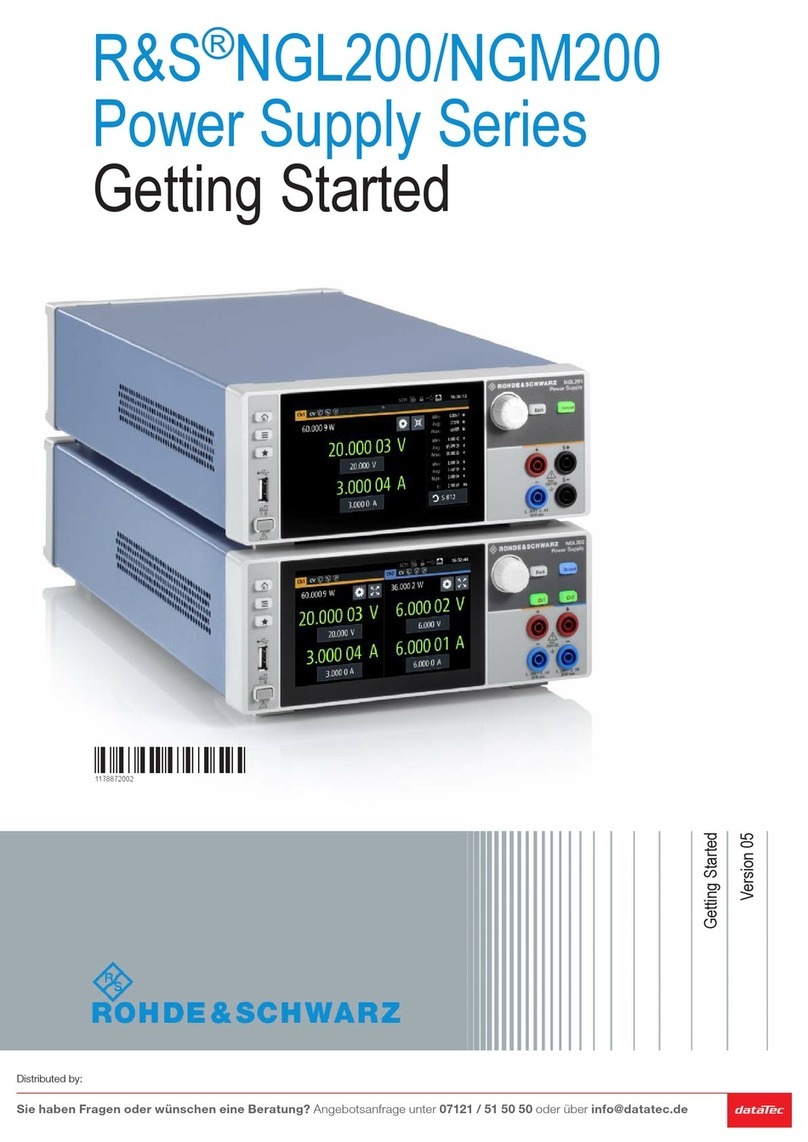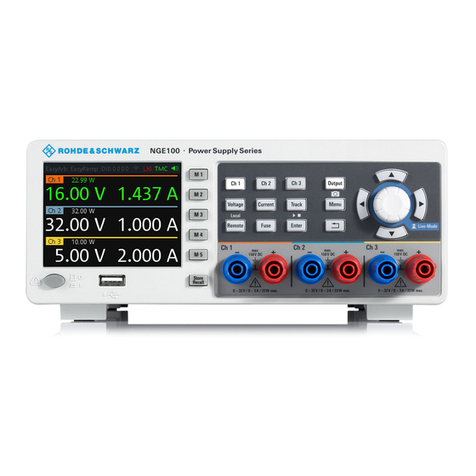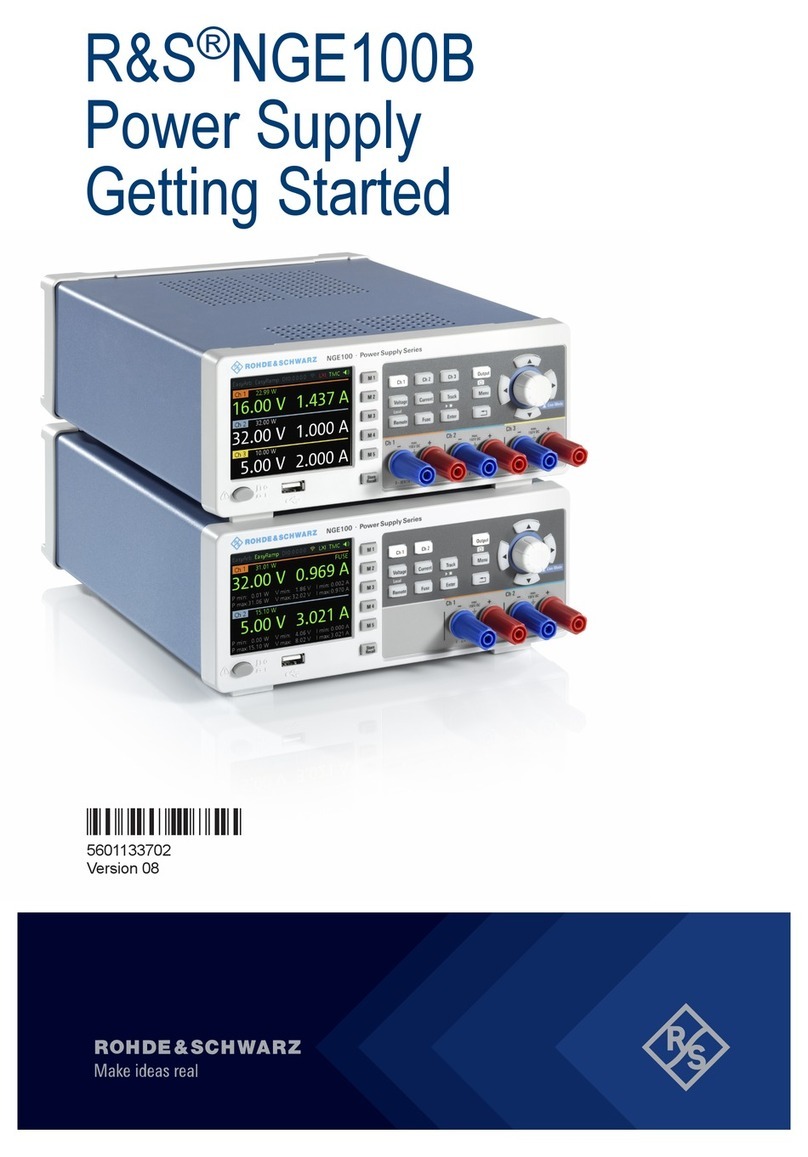
Contents
R&S®NGL200/NGM200
4User Manual 1178.8736.02 ─ 05
5.2.1 Using Gestures............................................................................................................. 30
5.2.2 Accessing Functionality in the Home Window.............................................................. 30
5.2.2.1 Settings Button..............................................................................................................31
5.2.2.2 Voltage and Current Inputs........................................................................................... 31
5.2.2.3 Expand/Collapse Button................................................................................................32
5.2.3 Input Data......................................................................................................................33
5.3 Front Panel Keys.........................................................................................................34
5.3.1 Menu Controls...............................................................................................................34
5.3.1.1 Home Key..................................................................................................................... 34
5.3.1.2 Settings Key.................................................................................................................. 34
5.3.1.3 User Key....................................................................................................................... 37
5.3.2 Navigation Controls.......................................................................................................37
5.3.3 Output and Channel Controls........................................................................................38
5.4 Power Derating............................................................................................................38
5.5 Operation Modes.........................................................................................................38
6 Instrument Functions.......................................................................... 40
6.1 Setting the Channels Voltage and Current............................................................... 40
6.2 Activating the Channels Output................................................................................ 41
6.2.1 Set Constant Resistance...............................................................................................42
6.2.2 Fast Transient Response.............................................................................................. 43
6.2.3 Output........................................................................................................................... 44
6.3 Ranges / Digital Voltmeter (DVM)...............................................................................48
6.4 Battery Simulator........................................................................................................ 50
6.5 Protection.................................................................................................................... 55
6.5.1 Over Current Protection (OCP)..................................................................................... 55
6.5.2 Over Voltage Protection (OVP)..................................................................................... 56
6.5.3 Over Power Protection (OPP)....................................................................................... 56
6.5.4 Safety Limits..................................................................................................................57
6.6 Trigger / Digital I/O...................................................................................................... 58
6.7 Advanced Features..................................................................................................... 63
6.7.1 Arbitrary.........................................................................................................................63
6.7.1.1 Arbitrary Editor.............................................................................................................. 64
6.7.2 Ramp.............................................................................................................................66






